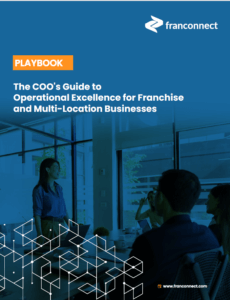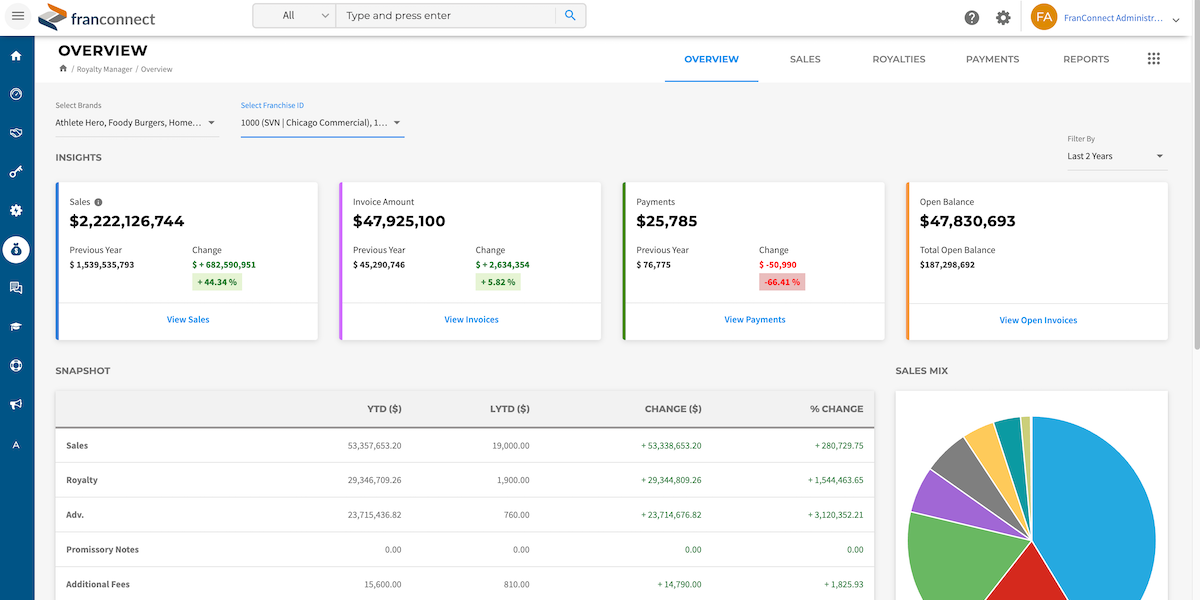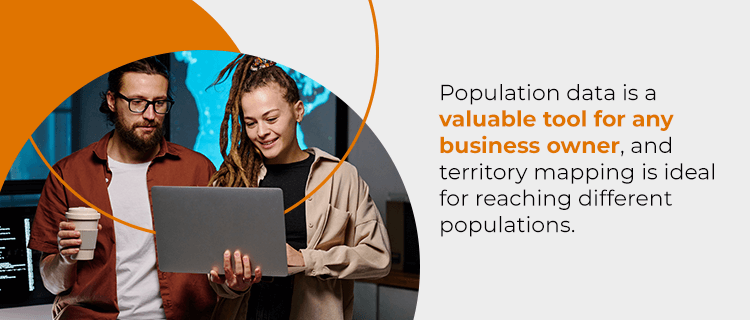It’s 7:30 AM, and Sarah, the operations director of a 13-location sandwich franchise, is already drowning in spreadsheets. Three franchisees have emailed overnight about royalty calculation discrepancies. Her field operations manager can’t locate last quarter’s compliance reports for an upcoming audit. Meanwhile, the CEO wants updated growth projections by noon.
As Sarah toggles between 16 open Excel files, a notification pops up — another location opening is delayed again because onboarding paperwork is incomplete. The ROI conversation around franchise management software she’s been putting off with leadership suddenly feels urgent.
It’s a familiar story playing out daily across growing franchise networks. Manual processes that worked for 2-3 locations become serious bottlenecks at 5, 10, 25, 50, or 75 locations.
The question isn’t whether you can continue operating with your current manual systems. The real question is how much invisible growth you’re sacrificing by doing so. Let’s explore the hidden costs of spreadsheet dependency in franchise management and reveal why the journey from fragmented processes to streamlined operations is the key to unlocking your brand’s full potential.
The Hidden Costs of Spreadsheet Management for Growing Franchises
When franchise operations rely on spreadsheets and manual processes, they incur costs that extend far beyond the obvious. The franchise spreadsheet problems that plague growing brands create a cascading effect of inefficiencies that silently erode profitability and stifle expansion.
First, there’s the sheer time investment. Operations directors like Sarah spend significant hours each week just gathering, formatting, and reconciling data from multiple sources, time that could be dedicated to strategic growth initiatives. As your franchise expands beyond 5 locations, this administrative burden grows exponentially, often requiring additional headcount that directly impacts your bottom line.
Then comes the error factor. Spreadsheets are notoriously error-prone, and in franchise management, these mistakes translate to real business consequences. Miscalculated royalties strain franchisee relationships. Overlooked compliance issues create legal vulnerabilities. Inaccurate inventory forecasts lead to stockouts or waste. Each error compounds, creating friction that slows your growth trajectory.
Perhaps most concerning are the opportunity costs, the invisible growth barriers you might not even recognize:
- Delayed decision-making: When data lives in disconnected systems, gathering insights takes days instead of minutes, causing missed opportunities.
- Franchise development bottlenecks: Manual onboarding processes extend opening timelines by weeks or months.
- Relationship damage: Administrative errors and delays frustrate franchisees, damaging the trust essential for system-wide growth.
- Competitive disadvantage: While you’re wrestling with spreadsheets, competitors with streamlined operations are expanding faster.
The real cost isn’t just what you’re spending on inefficient processes. It’s the growth you’re leaving on the table by not investing in purpose-built franchise management solutions.
How Manual Franchise Operations Impact Your Bottom Line
Manual franchise operations directly undermine your financial performance in measurable ways. When managing spreadsheets and disconnected systems, your brand suffers across multiple dimensions.
The warning signs that manual operations are limiting your growth include:
- Delayed expansion: Slower location openings mean months of lost revenue potential.
- Inconsistent execution: Compliance issues damage customer experience and brand reputation.
- Resource drain: Teams spend time managing paperwork rather than driving growth.
- Scaling inefficiency: Administrative overhead increases proportionally with each new location.
For growth-focused brands, the question is simple: Can you afford systems that fundamentally cap your expansion potential and profitability? The ROI of purpose-built franchise management software becomes compelling when you quantify these hidden costs.
Overcoming Common Franchise Growth Challenges Through Technology
Growing franchises face consistent operational hurdles that directly impede their expansion. Franchise management software ROI becomes immediately apparent when purpose-built technologies directly address these pain points. Rather than applying generic business software to franchise-specific challenges, dedicated solutions provide targeted capabilities for multi-location brands.
Take consistency challenges, for instance. When franchisors rely on manual processes, maintaining brand standards across locations becomes increasingly difficult. Purpose-built franchise software solves this through digital brand standards, automated audits, and real-time compliance monitoring. This ensures customers experience the same quality whether they visit location #5 or location #75.
Manual franchise operations often suffer from communication breakdowns. Field staff struggle to share critical information, franchisees miss important updates, and leadership lacks real-time visibility into location-level performance.
An integrated platform centralizes communication, creating a single source of truth that eliminates the “I never got that memo” problem. Leadership gains real-time with dashboards that surface issues early —enabling proactive decision making before they escalate into a full-blown crisis.
Technology features that directly address growth barriers include:
- Automated workflows that streamline location openings by eliminating manual handoffs and documentation delays
- Centralized training that ensures consistent onboarding and ongoing skill development across the network
- Performance analytics that uncover best practices from top-performing locations and scale them system-wide
- Compliance management tools that automate audits, standardize reporting, and reduce both risk and administrative overhead
- Royalty management systems that eliminate calculation errors and accelerate collection
When applied strategically, these technologies transform operational inefficiencies into competitive advantages, enabling brands to focus on growth instead of administrative work.
From Manual to Streamlined Operations
Let’s consider a hypothetical example based on typical results seen across franchise brands. Imagine “FastServe Burgers,” a fictional 47-location quick-service restaurant franchise struggling with inconsistent operations and slow expansion. Their franchise development process relies on spreadsheets, email, and shared drives, resulting in lengthy opening timelines and frustrated franchisees.
After implementing an integrated franchise management platform, this hypothetical franchise could see transformative results — mirroring real-world results FranConnect customers achieve:
- Location opening time decreased by 28%, accelerating revenue generation by getting new units operational much faster
- Compliance with brand standards improved by 32%, directly enhancing customer experience and satisfaction scores
- Field support team productivity significantly increased, allowing the same staff to support more locations without additional headcount
- Real-time performance visibility enables leadership to identify and address underperforming locations before they fail
Perhaps most importantly, average unit economics improve up to 18% compared to pre-implementation baselines, making a strong ROI case that justifies investment in franchise management software within the first year.
Transitioning from manual franchise operations to streamlined, tech-enabled systems creates a foundation that franchises need for sustainable growth, far beyond what manual systems can support.
The Strategic Value of Purpose-Built Franchise Management Solution
Making the leap from spreadsheets to a purpose-built franchise management solution is a strategic move that accelerates growth. The hidden costs of manual operations become real roadblocks to growth as your brand expands beyond a few locations.
The ROI of a franchise management solution is clear:
- 28% faster openings
- 32% better compliance
- 18% improved unit economics
By eliminating spreadsheets and fixing operational inefficiencies now, your brand can seize on growth opportunities while competitors stay stuck in manual processes.
Ready to explore how purpose-built franchise management technology could transform your operations? Request a demo today.
















 Ian Walsh
Ian Walsh








